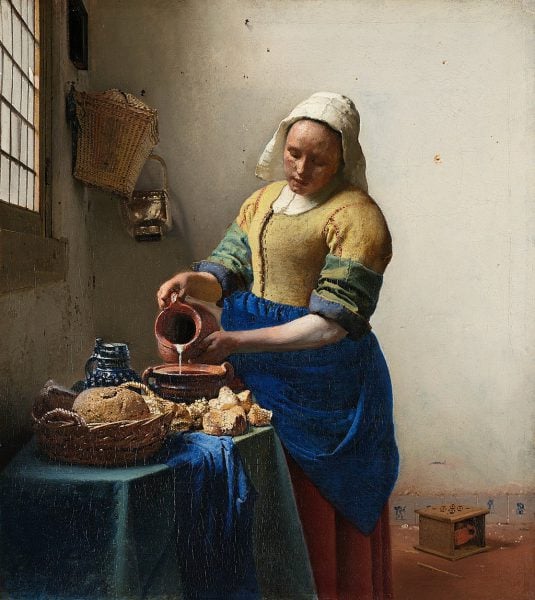
Light is life. It is the essence of art. Yet light exposure will result in light damage that will hasten the fading, discoloration, and eventually the destruction of practically all artworks, photographs, works on paper, books, fabrics, documents, and just about any other item you have in your collection or your family archive.
Absolute darkness is the best storage condition for an artifact, but that is not always possible or desirable. There are things you can do to minimize light damage to your art and artifacts. It’s important to have a general understanding of both the dangers of light damage and the easy, do-it-yourself solutions that are available.

Since most of us prefer not to live in the dark, at least not literally, there are a few things you should know regarding the dangers of light damage before you go about displaying and storing your art, collections, and family or genealogical archives.


UV Light & How to Combat It
Ultraviolet Light – radiation having a wave-length beyond the visible portion of violet in the spectrum. Sunlight is a common source of ultraviolet light. Ultraviolet radiation is potentially damaging to all works on paper, photographs, library and archive collections, museum objects, leathers, household fabrics, and collectibles (and skin without sunscreen!). It is more pronounced in sunlight and fluorescent light than in incandescent light.
UV-Filtering Materials – used to filter the ultraviolet (UV) rays out of visible light. Removing UV radiation from storage and display areas can reduce the rate of deterioration of stored or exhibited objects and artifacts. While UV-filtering material is often placed over windows or fluorescent light tubes in museums, practical home applications are also available in the form of acrylic or glass sheets with UV-filtering properties that can be used when framing artwork and photographs.
Simple Placement – if UV light, especially sunlight, is one of the most important things to protect against then the first step is to avoid it. Do not hang framed artwork on a wall that will receive direct sunlight. Do not use fluorescent lighting either as this has a lot of UV light. The same rule applies to your collection of old books, valuable antique furniture, displays of collectibles on shelves, etc.
Darkness – when storing your collections make sure they are in the right type of archival enclosures and placed in an opaque, acid-free box. Then take the next step and store these archival boxes in a cool, dark, dry place such as a closet in your living space—never in your attic or basement.
The Right Tools for the War on Light Damage

Optix UV-Filtering Acrylic is a lightweight, shatter-resistant material that can be used instead of glass in your picture frames. Each sheet filters out 98% of UV rays to protect your artwork from harmful ultraviolet light that can fade your images over time.

Gallery 12 Wood Frame kits are available in a variety of sizes—each with the added bonus of UV filtering—and all you need is a phillips-head screwdriver to do your own framing of your matted artwork. The kit includes a solid wood frame in either natural clear maple, satin black or satin white, and comes with a sheet of Optix UV-Filtering Acrylic, 1/8″ acid-free foamboard backing, hanging hardware, and picture wire (standard pre-cut and custom mat cutting is also available, see details here). These frames offer excellent UV protection, and are easily re-opened to access your artwork as needed.
Storage Solutions to Prevent Light Damage

This book sat on a shelf next to a smaller book that partially shielded it from the harmful effects of light. The area where the cover fabric has faded is clearly visible, leaving a permanent ghostly shadow of the smaller book. Perhaps the biggest problem here is actually not the color change, but rather the weakening of the cover and spine materials holding the book together. These are the invisible effects of unchecked light damage, invisible until the book falls apart in your hands.
Just as book binding cloths and leathers are susceptible to light damage, so are practically all other types of fabrics. To prevent this, consider preserving old fabrics and textiles with an all-in-one Textile Storage Kit.
To remedy what ails the faded vintage black and white photograph, it would be best to take it to a reputable photo restoration lab to have it scanned, color and density adjusted, and reprinted for framing or for the family archive. Store the original in a high-quality archival print storage kit, or perhaps in a 3-ring print page in a well-made archival binder.
Remember this light-faded photograph? Again, our advice would be to take it to a reputable photo retouching or restoration lab, have it scanned and color-corrected, reprinted for display, and then archivally store the original in an acid-free flap envelope or crystal clear bag and then place it in a 3-inch drop front box or other archival storage box of your choice.

Like the book illustrated above, this pamphlet from the 1910s has selective light damage. Thin paper artifacts such as this can be stored in a variety of archival enclosures or in an all-in-one document storage kit, which includes acid-free file folders and an archival document box, thus offering two layers of archival protection from light, dust, and household pollutants.

For more information on the harmful effects of light, and how major archives and museums address these issues, please see this detailed article from the Northeast Document Conservation Center.
Contact Us
If you have any additional questions on light damage or would like more information on the archival storage and presentation materials that are right for you, please contact us here at Archival Methods. We’re always there to help with any archiving, storage, or presentation questions you may have.




